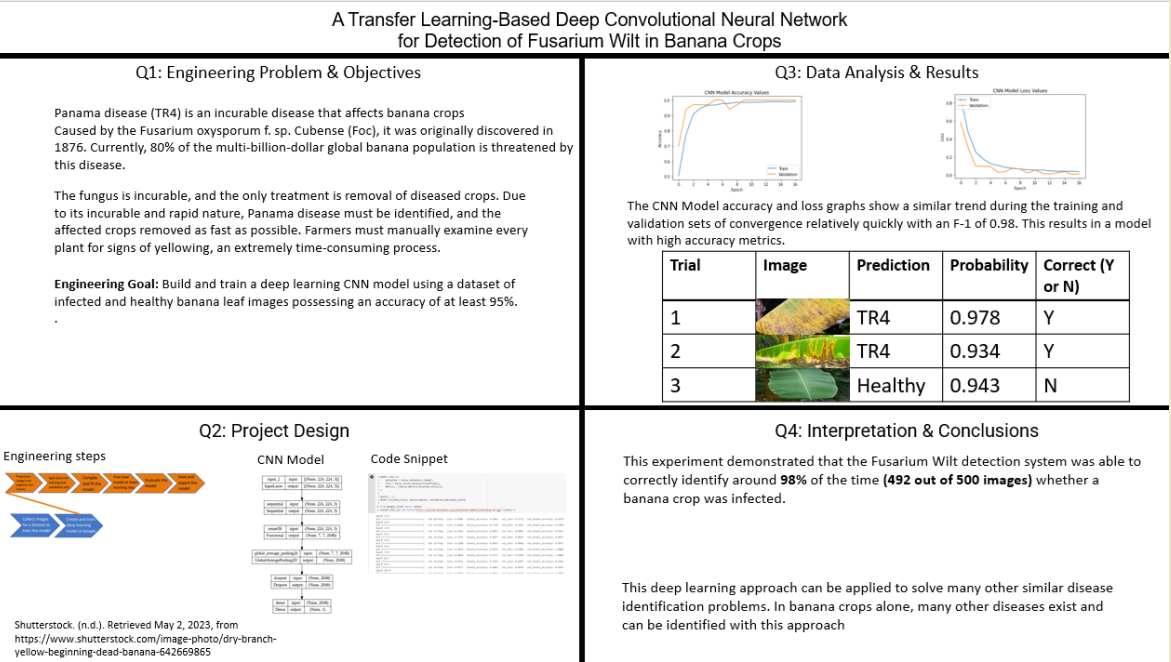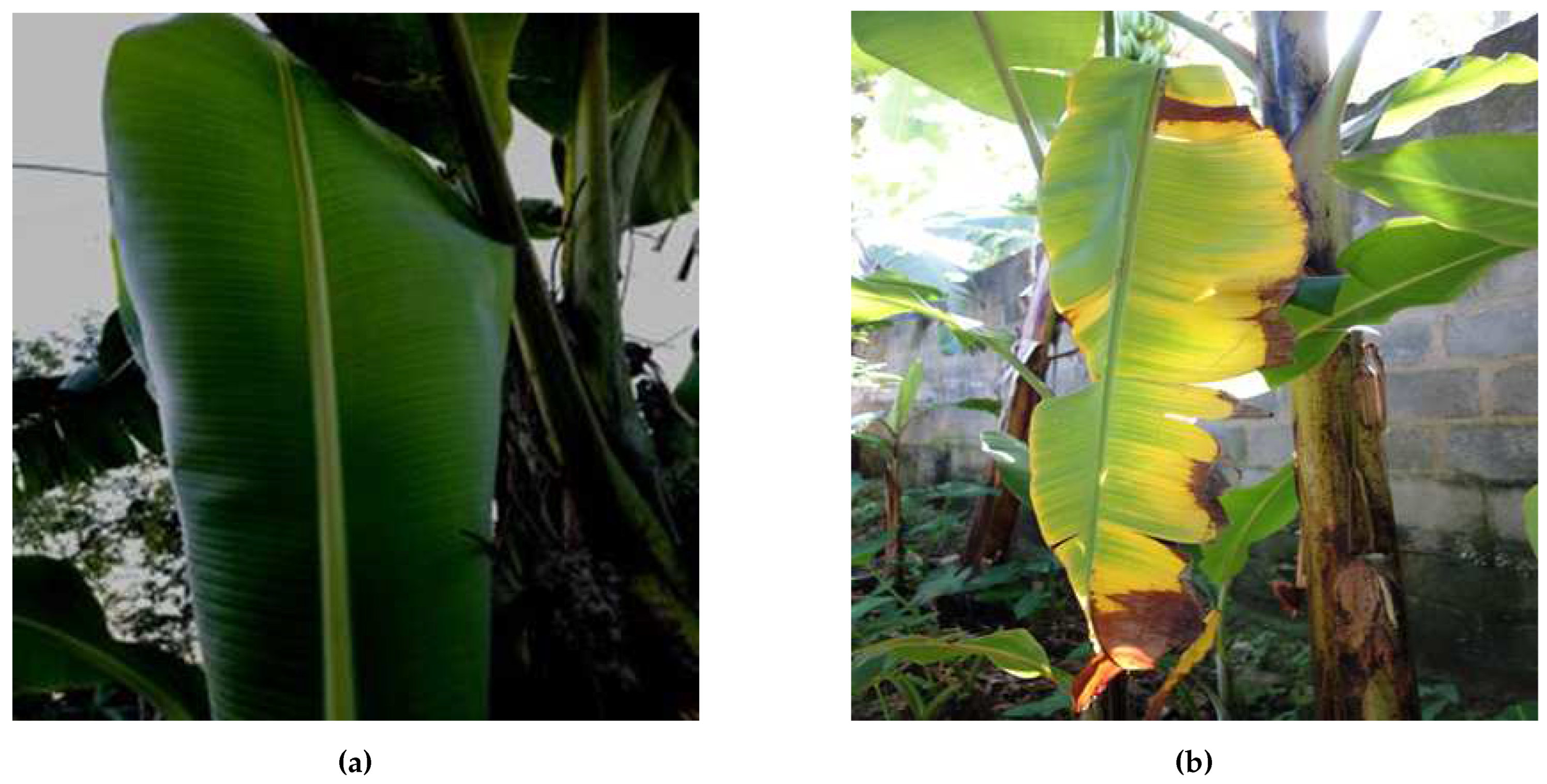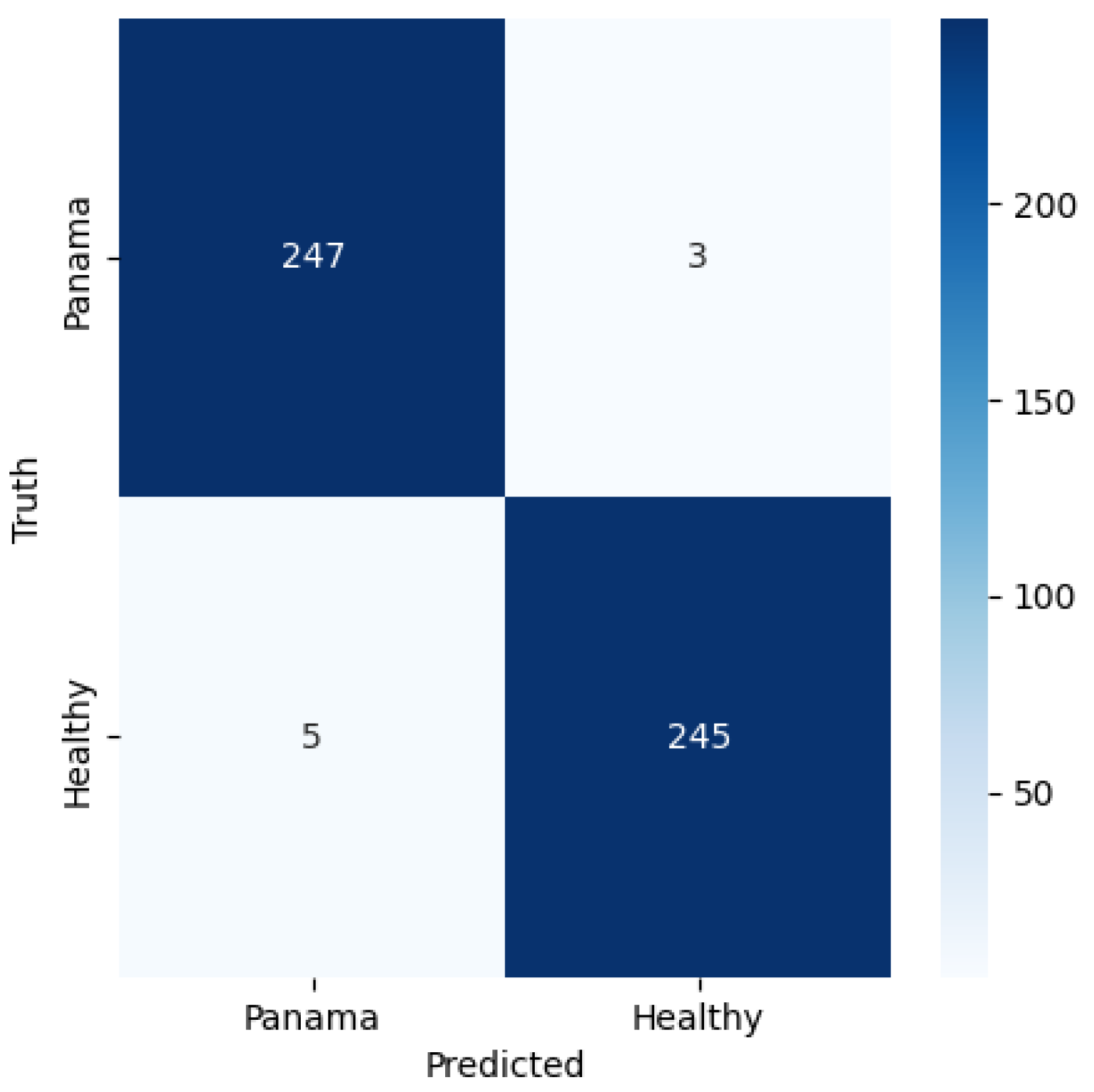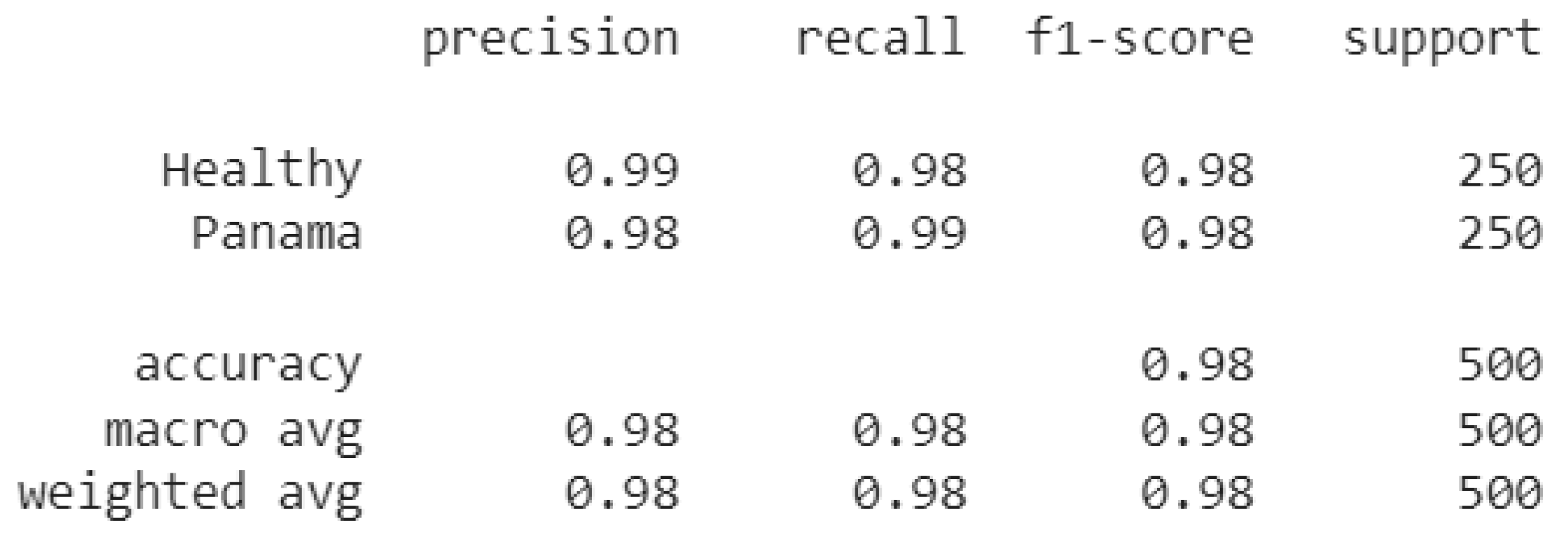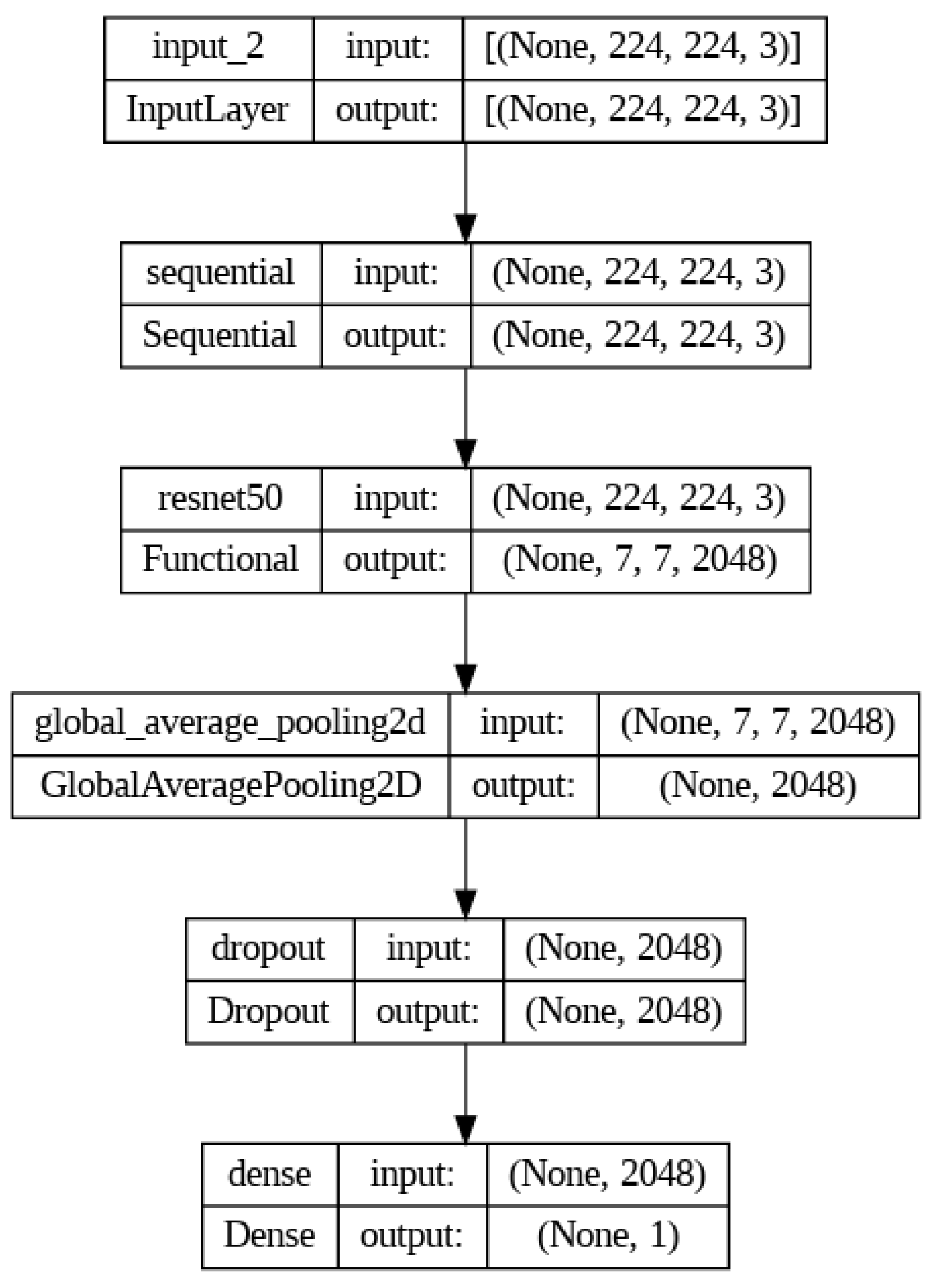1. Introduction
Banana (Musa spp.) is one of the most widely produced cash crops in the tropical regions of the world and the fourth most important crop among developing nations. Over 130 countries export bananas, contributing to a total revenue of 50 billion dollars in revenue per year(Ploetz, 2021). Fusarium wilt or Panama disease is caused by the Fusarium oxysporum f. sp. cubense tropical race 4 (TR4), is a well-known threat to global banana production (Heslop-Harrison, Schwarzacher, 2007; Shen et al., 2019). TR4 infected hundreds of thousands of hectares of banana plantations throughout countries like China, India, the Philippines, Australia, and Mozambique (Ordonez et al., 2015).
Four to five weeks after inoculation with Foc, banana crops begin to exhibit the main symptom of Fusarium wilt, yellowing of their leaves. TR4 can spread through flowing water, farm equipment, infected plant material, and soil contamination. Approximately four to five weeks after being inoculated with TR4, banana crops start displaying the primary symptom of Fusarium wilt: the yellowing of their leaves. These once-vibrant leaves gradually begin to droop and eventually collapse, forming a ring of lifeless foliage encircling the pseudo-stem of the crop (Van Den Berg et al., 2007). Over time, an increasing number of leaves experience wilting and collapse, resulting in the entire canopy of the crop being composed solely of withering and deceased leaves.
Currently, the main method used to manage Fusarium wilt is to inspect banana plantations with manual labor in hopes to identify these yellowing leaves. However, this process requires enormous amounts of time and money to perform (Ye et al., 2020). Also, manual inspection quality is affected by the experience and expertise of the farmer performing the inspection, meaning accuracy of diagnosis cannot be ensured (Mahlein, 2016). Additionally,there are currently no chemical or physical treatments available that can effectively control Fusarium Wilt. Once the signs of this disease are identified, the only viable treatment option is the rapid removal of the crop in order to prevent a large-scale infection from occurring (Lin et al., 2017).
Alternatively, Remote sensing has been used in recent studies to detect the presence of Fusarium wilt. For example, a DJI Phantom 4 quad copter (DJI Innovations, Shenzhen, China) equipped with a MicaSense RedEdge MTM five-band multi spectral camera to perform remote sensing surveys of banana plantations in China (Ye et al., 2020). The multi spectral images was then used to calculate different vegetation indices, attempting to find the infection status of Fusarium wilt in the plantation. The same approach used in (Zhang et al., 2022) to detect Fusarium wilt on banana plantations.
The main drawback to these remote sensing detection systems, despite their ability to detect Panama disease, is similar to that of conducting manual inspections: the high cost. The high-quality multispectral and hyperspectral cameras required by these types of detection systems can range in cost from several thousands of dollars to tens of thousands of dollars. Given that Fusarium wilt infections mostly occur in developing countries on the continents of South America, Africa, and South Asia (Dita et al., 2018), it is clear that farmers in those regions cannot afford high quality spectral cameras and the computational power used to analyze spectral images.
Presently, convolutional neural networks have been used to detect many different plant diseases through their symptoms within the visible light spectrum. In computer vision, deep convolutional neural networks (CNNs) can achieve excellent performance in image classification tasks (Mukti and Biswas, 2019). CNNs are a variant of deep neural networks that are designed to mimic the cognitive process of human vision. CNNs receive an input, usually in the form of an image, which is then fed through layers of neurons that perform nonlinear operations, lastly, the output is in the form of a list of scores between 0 and 1, each of which represents the likelihood of the image belonging to an image class. The nonlinear operations at these neurons are optimized through a training procedure (O’Shea and Nash, 2015).
Transfer learning is a technique used in the design of deep learning models to reduce the need for large training datasets and high computational cost for training. Transfer learning essentially works by integrating the knowledge of a previously trained CNN model into a new CNN model desgined for a specific task(Shaha and Pawar, 2018). Transfer learning approaches have been used in plant classification, sentiment classification, software defect prediction and more (Geetharamani and Pandian, 2019). There are several pre-trained models that can be selected as the base model for transfer learning, such as ResNet, AlexNet, Inception V-3, VGG16, and ImageNet. In (Mutki and Biswas, 2019) the authors evaluated the aforementioned four pre-trained models in a transfer learning based plant disease detection task. It was found that ResNet-50 is the best model and achieves an accuracy of 0.9980.
1.1. Literature Review
CNNs have been used to detect some plant diseases, such as soybean plant diseases (Wallelign et al., 2018), apple black rot, grape leaf blight, tomato leaf mold, cherry powdery mildew, potato with early blight, and bacterial spots on a peach (Geetharamani and Pandian, 2019). In (Pandian et al., 2022), the authors were able to create a convolutional neural network model for detecting 58 classes of plant leaves from aloe vera, apple, banana, cherry, citrus, corn, coffee, grape, paddy, peach, pepper, strawberry, tea, tomato, and wheat crops.
In (Sangeetha et al., 2023), the authors developed a deep learning based neural network model to identify Fusarium wilt. They were able to achieve an accuracy of 0.9156 after evaluation of their model on 700 samples of diseased and healthy banana leaf images. The accuracy achieved in their study was around 0.065 lower than the 0.98 accuracy obtained in this paper. Their samples included completely healthy, partially affected, and fully affected banana crop images.
As previously mentioned, (Ye et al., 2020) proposed a remote sensing-based detection model of fusarium wilt on banana plantations in China. Their model leveraged the changes to the vegetation indices caused by fusarium wilt to detect the disease.
In (Ibarra et al., 2023), the authors utilized the Yolo v4 neural network model embedded in a Raspberry Pi to detect fusarium wilt in banana leaves. The system consisted of a power source connected to a Raspberry Pi displayed on a small LCD screen. Their handheld system was able to identify the infection with an accuracy of 0.90 in the field. Additionally, their system is much more compact and portable than existing options and less reliant on internet and computational power than smartphone apps. The Yolo framework essentially takes one shot of the identification target and makes a rapid prediction using a reasonable amount of computational power, sacrificing accuracy for quickness.
In (Chaudhari and Patil, 2020), the authors proposed the use of a Support Vector Machine (SVM) classification framework to identify four types of banana diseases in India. These four were sigatoka, cmv, bacterial wilt and Fusarium Wilt. Their classification performed with an average accuracy of around 0.85 in detecting these diseases with accuracies of 0.84, 0.86, 0.85, and 0.85 respectively for the four diseases.
1.2. Objectives
The main objectives of this study were to (I) build and train a transfer learning-based convolutional neural network model for the identification of Fusarium wilt in banana crops, (II) use the ResNet-50 pre-trained model as a base in the neural network, and (III) to assess the precision of this model in identifying Fusarium wilt.
2. Materials and Methods
2.1. Dataset
In (Medhi and Deb, 2022), the authors created a comprehensive data set comprising diverse images of banana diseases and healthy plant samples. The data set used in this study for the purpose of training the CNN model is a subset of their data. The initial data set consisted of approximately 100 images of Fusarium wilt infected banana leaves, as well as 100 images featuring healthy banana leaves. These images were captured at different times of the day, under varying environmental conditions, ensuring a wide range of scenarios for greater model robustness.
The original images from the data set had dimensions of 256 x 256 pixels. However, to align with the dimensions of the input layer in the CNN model, the images needed to be resized. The images were adjusted to a standard size of 224 x 224 pixels. This resizing ensured that all input images were consistent in terms of dimensions, enabling seamless processing within the CNN model.
By adjusting the image dimensions to match the input layer’s size, the CNN model was able to receive and process the image inputs. This harmonization of image sizes enabled a consistent and fair comparison across different samples during the training process, ensuring that the model learned from the entire data set uniformly.
Figure 1.
A comparison between healthy and diseased banana leaves: (a) An image of a healthy banana leaf and (b) An image of a Panama-diseased banana leaf.
Figure 1.
A comparison between healthy and diseased banana leaves: (a) An image of a healthy banana leaf and (b) An image of a Panama-diseased banana leaf.
2.2. Data Pre-processing and Augmentation
To enhance the size of the initial dataset of banana leaf images and mitigate the risk of overfitting resulting from limited data, data augmentation techniques were employed. Random flipping, rotation, and noise addition were applied to expand the dataset, resulting in a collection of 300 images for each class. This augmented dataset served to provide the model with a richer and more diverse sample to train on, ensuring improved generalization capabilities beyond the original dataset.
The expanded dataset, now comprising a total of 600 labeled images, was partitioned into training and testing sets. This partitioning was carried out in an 80:20 ratio, with 0.80 of the images allocated to the training set, while the remaining 0.20 constituted the validation set. This division ensured that the model was trained on a substantial portion of the data while retaining a dedicated subset for performance evaluation and fine-tuning.
By establishing a clear distinction between the training and validation sets, the model’s performance could be effectively assessed and monitored during the training process. This separation allowed for a rigorous evaluation of the model’s ability to generalize its predictions to previously unseen data, ensuring that it could effectively detect and classify Fusarium wilt infection in banana crops beyond the images it had been trained on.
2.3. Transfer Learning
The goal of this study was to establish an efficient transfer learning-based CNN model for detecting Fusarium wilt infection in banana crops. Emphasis was placed on CNNs, which can be easily trained and deployed to facilitate wider use. To achieve this goal, we utilized the high-level neural network Application Programming Interface (API), Keras (Chollet et al., 2015), in conjunction with the machine learning framework TensorFlow (Abadi et al., 2015). We selected the popular CNN model ResNet-50 (He et al., 2016) due to its significant acclaim in the field of computer vision, particularly for its exceptional efficacy in image classification.
The ResNet-50 model we considered is available in Keras with pre-trained weights in the TensorFlow backend. This model was originally trained to recognize 1,000 different ImageNet (Russakovsky et al., 2015) object classes. In this paper, we modified the ImageNet-trained architecture of ResNet-50 to classify Fusarium wilt infection in banana crops. This modification involved replacing its last fully connected dense layer, which had 1,000 neurons, with a single-neuron fully connected layer.
2.4. Neural Network Architecture
The sequential structure of the CNN model ensures that each layer is stacked upon the previous one, enabling a systematic flow of information through the network. This sequential design facilitates the extraction of increasingly abstract features as the input image progresses through the layers.
2.5. Input Layer
Figure 2 offers a comprehensive visualization of the CNN model’s architecture, illustrating the step-by-step transformation of the input image. The model begins with the input layer, which receives an image of size 224 x 224 pixels with three RGB values. The image is represented as a 3-dimensional matrix. Each cell in this matrix contains a pixel value, which, for grayscale images, represents the intensity of the pixel, and for RGB images, there are three matrices or channels corresponding to the Red, Green, and Blue components. This matrix is then fed to the convolutional layer.
2.6. Convolutional Layer
The ResNet-50 layer, represented as its own distinct layer in
Figure 2, encompasses a series of components meticulously crafted to extract meaningful features. The initial convolutional layer performs convolutions on the input image, enabling the extraction of low-level features such as edges, corners, and textures. These low-level features play a crucial role in subsequent stages of the model.
Within the heart of the ResNet-50 model lies in its residual blocks, which are composed of multiple convolutional layers with increasing filters. These convolutional layers progressively capture complex and abstract features as the network delves deeper.
2.7. Max Pooling Layer
Following the initial convolutional layer, a max pooling layer is introduced to downsample the feature map. By reducing the spatial dimensions of the feature map, the max pooling layer extracts essential features while simultaneously enhancing computational efficiency. This reduction in size helps to highlight the most salient information while discarding irrelevant details.
2.8. Fully Connected Layer
The subsequent fully connected layer acts as a bridge between the convolutional layers and the final classification layer. It integrates the extracted features from the preceding layers and maps them to the appropriate dimensions for classification. This layer serves as a crucial component in aggregating and combining the representations learned throughout the network.
The last layer, the output layer, of the ResNet50 model is removed for the purposes of transfer learning. The only output layer used in the model will be at the end of the entire model as we have no need for probabilities of each prediction class to be output from the ResNet50 layer.
2.9. Global Average Pooling Layer
Once the information passes through the residual blocks, a global average pooling layer is applied. This layer reduces the spatial dimensions of the feature map by computing the average value of each feature map. By summarizing the information across the entire feature map, the global average pooling layer preserves the most relevant features while discarding spatial information. This process aids in focusing on the most descriptive aspects of the image.
2.10. Dropout Layer
After the global average pooling layer, a dropout layer is incorporated into the CNN model. The purpose of the dropout layer is to mitigate the risk of overfitting, a phenomenon in which the model becomes overly specialized to the training data and struggles to generalize well to unseen examples. By randomly dropping out a fraction of neurons during training, the dropout layer encourages the network to rely on a more diverse set of features and prevents excessive reliance on specific neurons. This regularization technique helps improve the model’s ability to generalize by reducing the likelihood of overfitting.
2.11. Output Layer
Finally, the CNN model concludes with a dense layer, which performs linear transformations on the input received from the previous layers. The dense layer’s role is to capture complex relationships and patterns in the extracted features. By applying appropriate weights and biases, the dense layer maps the transformed features to the desired output dimensions, ultimately aiding in the final classification task.
To generate classification probabilities for our specific problem, the dense layer utilizes the sigmoid activation function, specifically the logistic sigmoid function.
The sigmoid function, denoted in equation 1, transforms the output values of the layer into a range between 0 and 1. This property enables the model to interpret the resulting values as probabilities, representing the likelihood of a given input belonging to a particular class. By squashing the outputs within the desired range, the sigmoid activation provides normalized probabilities for each class. Each output neuron corresponds to a specific prediction class, in this case, Fusarium wilt or healthy.
Author Contributions
Contributions: Conceptualization, K.Y.; methodology, K.Y.; software, K.Y., M.S.; validation, K.Y., M.S., and Y.S.; formal analysis, K.Y., M.S., and Y.S.; investigation, K.Y.; resources, K.Y., M.S., and Y.S.; data curation, K.Y.; writing—original draft preparation, K.Y.; writing—review and editing, K.Y., M.S., and Y.S.; visualization, K.Y., M.S.; supervision, K.Y., M.K.C.S., and Y.S.; project administration, Y.S.; funding acquisition, Y.S. All authors have read and agreed to the published version of the manuscript.
